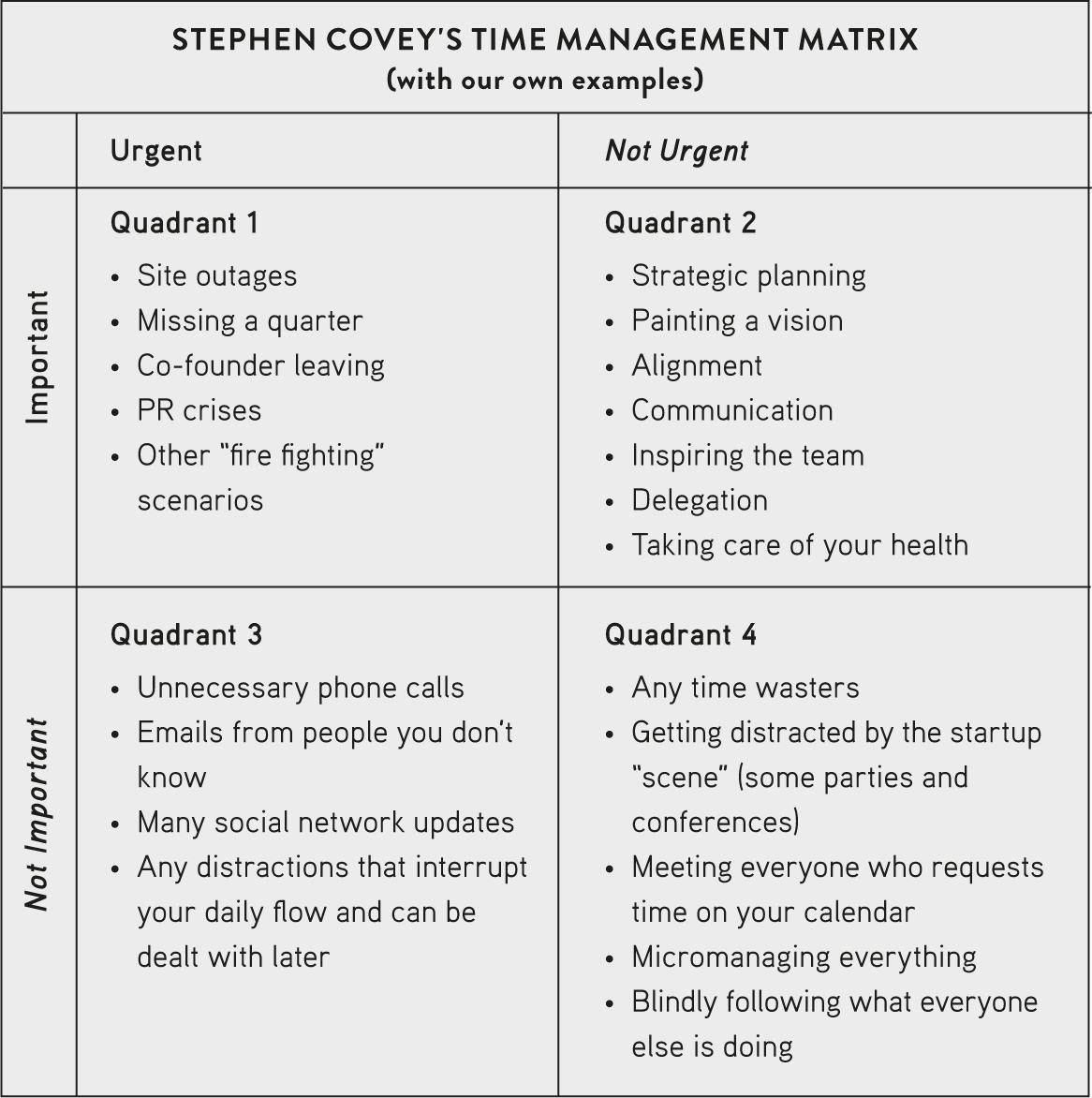WHEN YOU NEED TO FOCUS ON WHAT’S IMPORTANT
Dear Founder,
Every day your inbox is flooded with new emails, your team approaches you for approvals, and your customers are requesting all sorts of new features. There’s so much incoming, it’s hard to get to all of it. It’s hard to focus on what matters most.
A few years ago, when asked to write about a productivity hack, I wrote, “Why I don’t ‘do’ coffee,” and shared about how although I enjoy (decaf) coffee and stimulating conversation as much as anyone, I turn down these invitations in almost all cases.
I received a bit of backlash in the comments section, but I didn’t mean to come off as aloof. It’s just that I found that all of these meetings were an enormous time vortex because it was always a bigger commitment than a thirty- or sixty-minute meeting. Both parties have to travel to get there, and often someone is late. The hack I came up with—to connect via email instead of in-person meetings—helps me reach a far greater number of people and saves a lot of time that I can instead direct to my highest priorities.
All of us face so many demands and must constantly come up with hacks to save time. I’ve always tried to manage my time a certain way, but I never had a way to articulate it correctly until I read The 7 Habits of Highly Effective People by Stephen Covey. His Time Management Matrix helped me understand what was important and what wasn’t—and how to focus on the things that matter.
Covey’s framework delineates the things that matter today, things that may matter in the future, things that don’t have a lasting impact, or things that don’t matter at all. This matrix clearly revealed that the efforts that merited the most focus were those that were important—but not urgent (Quadrant 2).
Remember, Quadrant 2 takes deep introspection. It requires investing in what’s most important. This includes your health. If you do not take care of yourself, you will not have a productive life. I firmly believe that if you are able to do the Quadrant 2 activities that you need to do for your company and for your family, everything else will be beautiful. But neglect Quadrant 2, and you put your company, your family, and yourself at risk.

I think we all find that it’s easiest to focus on what happens in the moment—especially when there is a crisis or deadline. Too often we mistakenly concern ourselves with stopping the bleeding, and we don’t determine where the bleeding is coming from so we can stop it from happening again.
Of course, we must focus on what happens in Quadrant 1—companies can never succeed if they aren’t diligently putting out fires and working on fire prevention. Yet, Quadrant 2—the not urgent, but important, space where all wise planning takes place—is where magic happens.
CEOs must learn how to turn chaos into order, so their companies can look like well-oiled machines. So, how do you separate signal from noise, and focus on what matters?
• Steal time from the “urgent and not important” Quadrant 3. Don’t take telephone calls from someone you don’t know.
• Don’t plan or attend unnecessary meetings, which could fall into Quadrant 4. Build culture to make everyone else feel ownership of time that’s wasted.
• Don’t focus at all on Quadrant 4. Delegate—or remove—inconsequential tasks.
• Carve out Quadrant 2 time every week—make it a priority on your calendar and honor it. If you don’t, no one else will; they will drag you back into 1, 3, or 4.
• Take time to reflect every week on how you spent your time and whether you spent enough time in Quadrant 2. I promise you that the more you are able to spend there, the less time will be needed in Quadrant 1. (Always be minimizing 3 and 4.)
• If you spend time on what must be accomplished every week, and review that daily, you will find that you stay more focused on the big goals instead of making everyone happy on things that don’t matter.
One of the key skills for any leader to master is understanding what matters and what doesn’t. We all have only so much time in the world, so it’s best to spend it on things that are impactful.
All the best,

Maynard